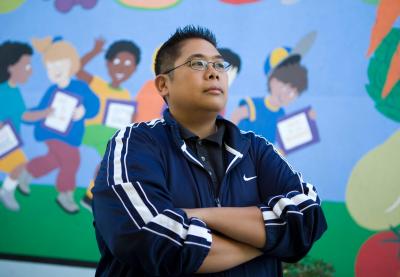Every year, Teaching Tolerance hears from teachers who are going the extra mile to support students from diverse racial, ethnic and cultural backgrounds. These teachers deserve to be recognized—that’s what the Teaching Tolerance Award for Excellence in Culturally Responsive Teaching is all about.
On Jan. 25, this year’s five winners will be presented their awards at a special ceremony in Washington, D.C., and awarded $1,000 apiece. More importantly, video of their teaching techniques will be used to design professional development resources that will help educators across the nation better support students.
“Quite simply, it’s easier to understand how to do something when you can see it being done by others,” said Teaching Tolerance Director Maureen Costello. “We hope this award not only recognizes the talented teachers reaching students from diverse backgrounds but also provides many other teachers with models to enhance their expertise.”
The winners of the 2012 Teaching Tolerance Award are as diverse as their schools and students, but all of them reach out to families and value home culture. All of them see students as individuals with valuable lived experiences. And all of them empower their students to be successful members of our diverse society.
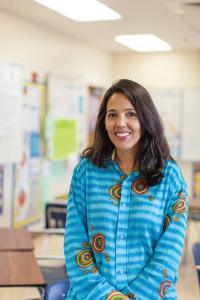
Lhisa R. Almashy
Park Vista High School
Lake Worth, Fla.
“Teaching is the best profession,” says Almashy. “Because our ‘products’ are human beings and we can be part of the vast resources they bring with them.” Almashy teaches ESL to ninth-, 10th- and 12th-graders. Her key to success with English language learners is to teach them to integrate their home and school lives by taking the best from both cultures. “I learn about my students’ values and experiences from their homes and communities by being involved not only in their education, but in their lives.” Through celebrating her students’ lived experiences, she steps beyond the stereotypes and generalizations to understand each individual student.
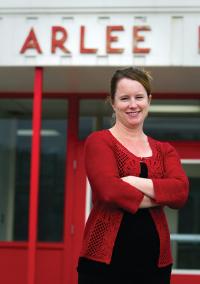
Anna E. Baldwin
Arlee High School
Arlee, Mont.
Baldwin teaches English, composition and speech, and multicultural literature on the Flathead Indian Reservation. About 70 percent of her students are of tribal descent, but she never makes generalizations about her students’ backgrounds. “Culture emanates from more than ethnicity,” says Baldwin. “There is teen culture, home culture, as well as traditional culture. So, I use [texts] that appeal to students’ interests, backgrounds and abilities.” Her hope is that through “earnest discussion about things that matter, provocative assignments and texts, and supportive and honest relationships, students will leave [the] classroom with a better sense of themselves, their world and their place in it.”
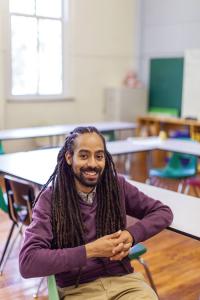
Darnell Fine
Atlanta Neighborhood Charter Middle School
Atlanta, Ga.
As a child, Fine’s household was labeled “chaotic,” and Fine himself “a behavior problem.” Today, his past struggles motivate him to “build on the knowledge students bring from home … [and] emphasize meaningful connections to real-life contexts” in his classroom. In addition to serving on his school’s diversity committee, Fine makes a point of building relationships with families. He acknowledges the value of his students’ home cultures by hosting open forums, town hall meetings and Socratic seminars. “In my classroom,” says Fine, “inclusion isn’t limited to celebrating cultural differences… [I provide] spaces for [students] to express their multiple perspectives.”
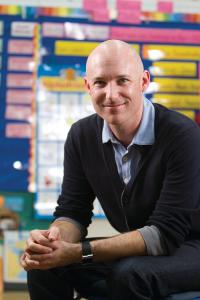
Robert P. Sautter
Leonard R. Flynn Elementary School
San Francisco, Calif.
Sautter believes he has achieved the highest success when a student develops a strong sense of self-efficacy. “Creating a bond of trust is key in building relationships with my students of diverse backgrounds,” says Sautter. He begins each school day with a “community circle” in which students greet each other using their home languages and implements a partnership plan with parents so they can share their goals for their children. “When I am shown the family photos, I listen attentively to the stories told,” says Sautter. “When I am offered dinner, I accept and participate in family customs—and I learn.”
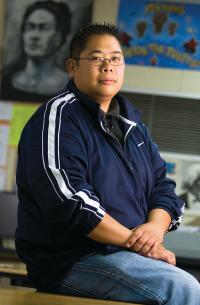
Laurence Tan
122nd Street Elementary School
Los Angeles, Calif.
Five pillars of learning inform Tan’s teaching—engage, educate, experience, empower and enact. He values each student’s identity and celebrates diversity, even asking families to share their expertise with students through mini-lessons. At the end of the year he hosts a parent appreciation night where he and his students acknowledge the important role families play in their children’s educational success. Tan says his students succeed academically—and he accomplishes this by using a social justice curriculum. “The development of youth into socially critical and responsible individuals is of the highest importance,” says Tan.
Photo credits: Todd Bigelow (Baldwin, Tan, Sautter); Dan Chung (Almashy, Fine)
